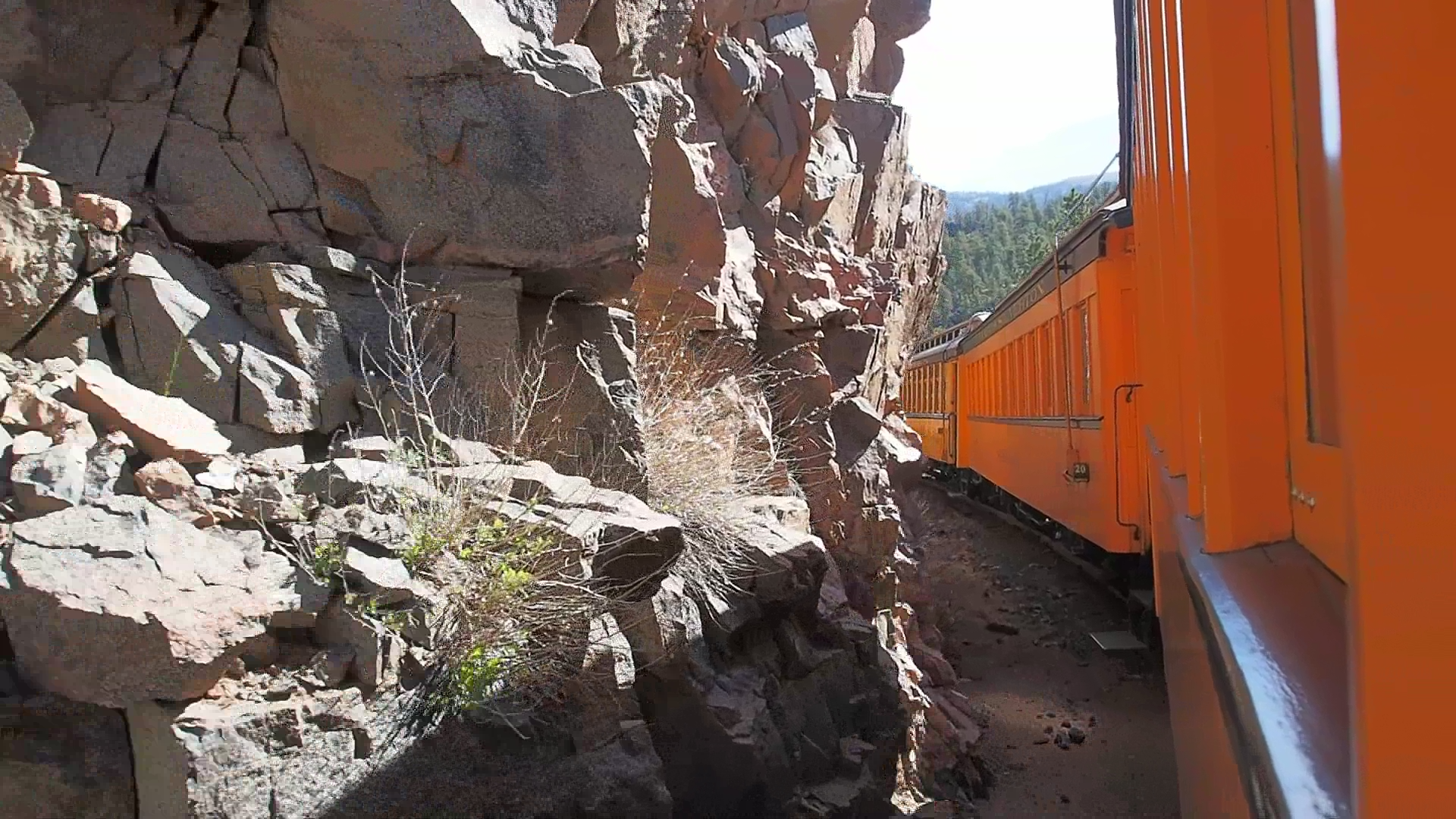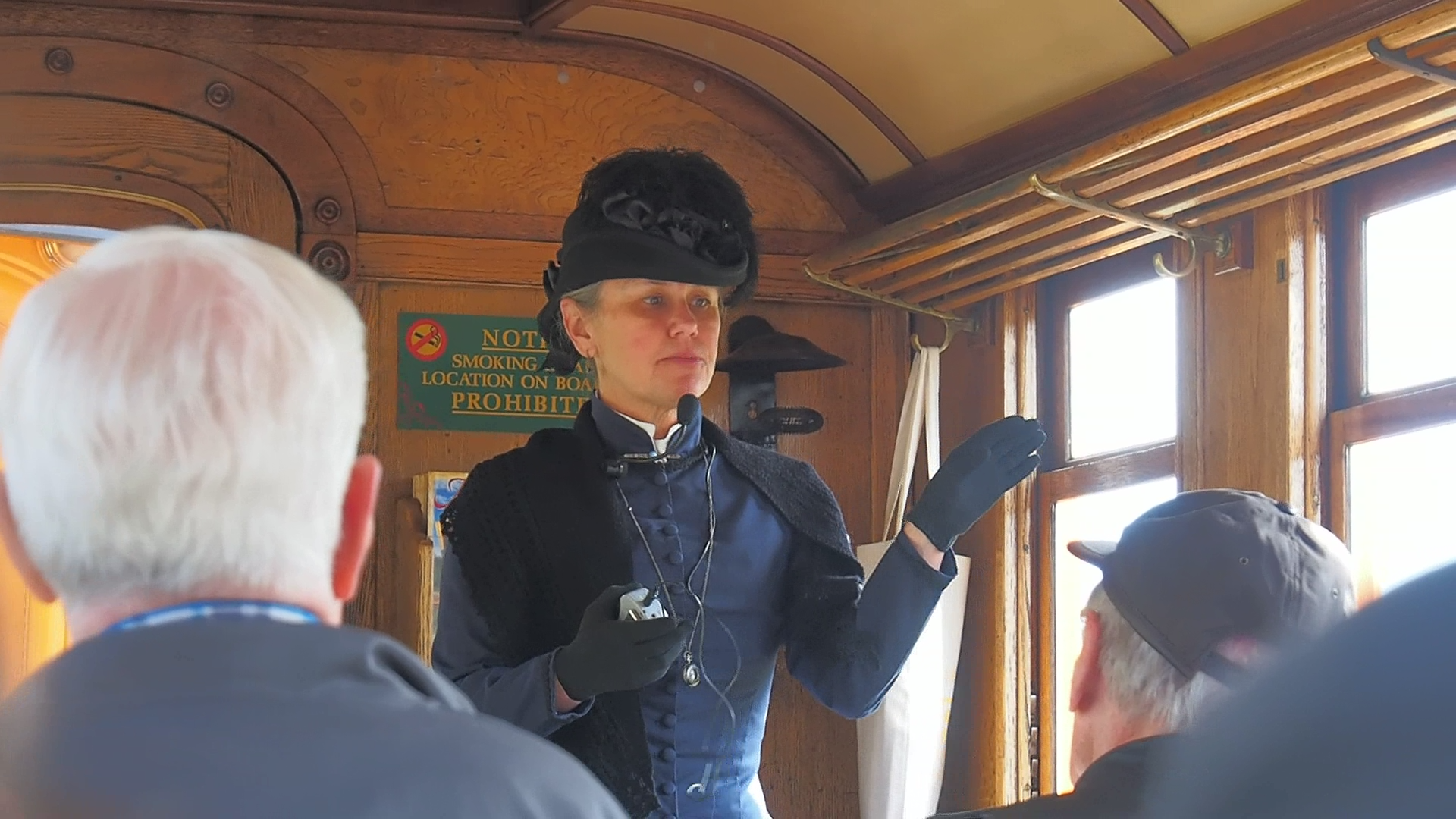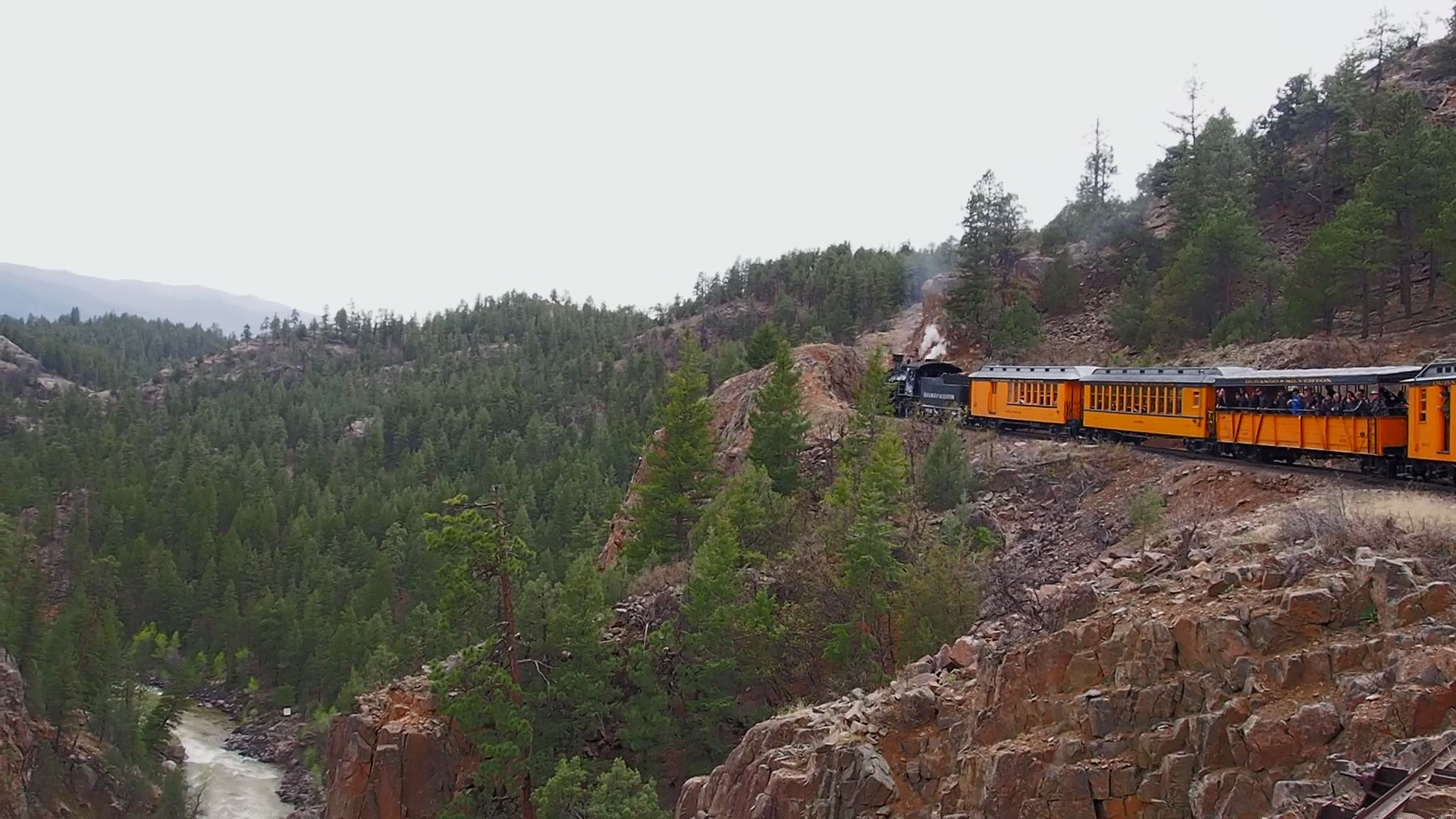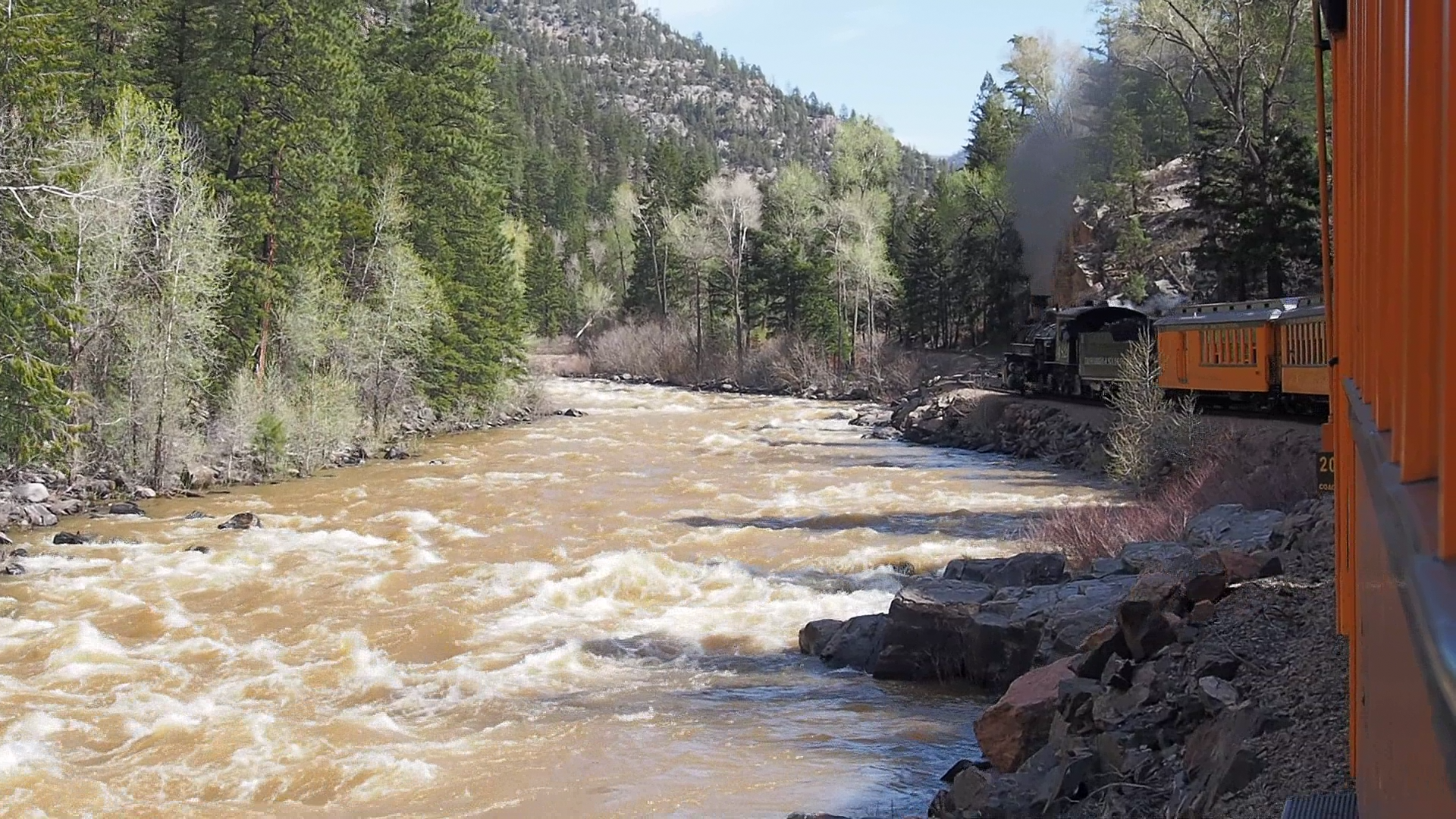Day 23
The crisp morning air ate through the thin long sleeve shirt I wore as I rode to the train station in the center of town. An advocate of “All the Gear, All the Time,” I also know how to look at the bigger picture and determine the times that’s just not practical. Today, and the many hours I’d spend of it on a steam train, was one of those times. I was given a green parking permit and directed towards a place where I could lower a kickstand. Despite there being a larger number of motorcycles on the roads than at any time prior, it was still an automobile’s world, and I wondered where on the bike I could keep the ticket displayed. I settled on sticking halfway into the pocket on my tankbag, the zipper cutting into the paper and securing it in place. Or at least that’s what I hoped.
After waiting long enough at the station to buy and drink a mocha, I climbed aboard the rail car and found my seat. As other passengers climbed aboard, I looked around the car, noticing the details of the antique vehicle. I’ve long held the belief that there haven’t been any new innovations in technology in the past 50 years, everything since being just an update to something that already exists. In my apartment the windows can be raised, locking in incremental positions. The window beside me, I noticed, worked identically, yet was a design that was 130 years older.
A whistle blew and, with a jolt, the train started moving. A woman at the front of the car stood and began to speak. Aside from the microphone worn around her neck, everything she wore was of the same period as the train: late 19th century. This was the train’s historical narration coach, and she would be the guide on the 3 hour ride up to Silverton. After the basic safety briefing (where we were warned it was in our best interest to keep hands and heads inside the car, that some rocks would pass within inches of the side of the train), she told us stories of life from that time.
One such story was of the founding of Durango, where surveyors studied wind directions to learn where to run the streets to avoid the steam and soot from the trains (hence the term, “the wrong side of the tracks”.) Then there was the Ute tribe and the Meeker Massacre, where the Utes killed Nathan Meeker, his employees, and kidnapped his wife and daughter. So enraged and frightened the citizens were that they’d be next, one rider rushed to Denver to have the governor send in the Army. Along the way, he stopped at a bar, told a story about how the southern towns were under attack and the Utes were chasing him, just so he could get a free drink before carrying on his way. And, as the train chugged its way through the mountains, we passed places that were once stage stops or towns that were once large enough to have their own post offices. Now, they were indistinguishable from the mountain forests around them.
After a few hours and a couple of water stops, the train pulled into the former mining town of Silverton. Many of the buildings were reminiscent of the late 1800’s, and with only one paved street, it seemed like time had abandoned the town long ago. I walked into a restaurant, a former brothel, and sat down at the bar for lunch. I had been through so many small towns on the trip, barely stopping for anything more than a couple of gallons of fuel, and something about this place hit me hard. This was a place that was struggling to survive, and had been since the local mining dried up several years before. The feds can pump all the money they want into trying to save cities like Detroit, but no one would be helping Silverton. But then, I started to wonder.
The question isn’t “how do you save a town”, but “should you save it”. In the same way that Darwin’s theory of Natural Selection works on living organisms, surely the concept can be applied to economies as well. No one bailed out Blockbuster Video for failing to be able to survive alongside Netflix. We had passed so many places that had failed and been abandoned, who could really decide what makes one place more important and worthy of saving than another? I finished my lunch, and left a $20 tip. It wouldn’t do much, but the thought counted, and most importantly, I was able to.
With some time remaining before needing to get back on the train, I walked down the main street some. I’ve always liked the idea of hats, not a ball cap with some team logo on the front of it, but fedoras and Stetsons and the like. In one store, I tried one on. It fit well, and was high quality, but it’s just not something I could see myself wearing regularly. Especially not enough to justify the $200 price tag. The shop owner came over and talked to me some, telling me some of the details about the hat and how the pocket of air between the head and the crown provided insulation and could even hold water for horses to drink from. It’s a shame I couldn’t find a use for it.
I’ve always had a fascination with trains and soon walked into another store, one with a variety of train memorabilia. Elsewhere in town, I had seen a rail spike with a small pewter mining train along the side. I saw it again here, but with one difference: it didn’t have the “Colorado” or “Silverton” or any other locational markings on it. And it was cheaper. I paid and headed back to the train.
We returned to town along the same route, but since we were headed in the opposite direction, I was now on the other side of the car, able to look out at the scenery instead of the mountain wall. With places overlooking deep canyons, and the track cut out of an almost vertical wall, it was a truly impressive feat of engineering that I doubted would ever be done again.
The train pulled back into town, the furnace of the K-36 engine having burnt a total of 5 tons of coal and injecting over 15,000 gallons of water over the day. I walked back to the bike and, despite having been gone all day, saw the little green ticket still in the zipper of the tank bag. I felt pleased with myself, having not expected it to hold there.






